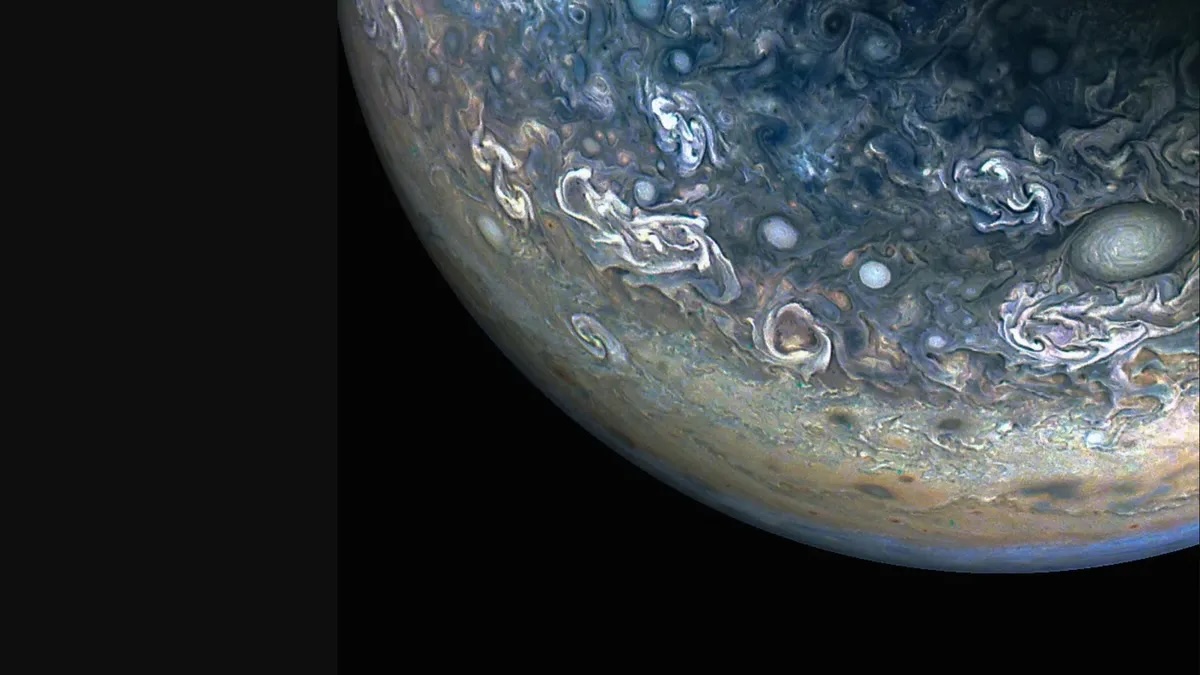Jupiter's surreal clouds swirl in new van Gogh-esque view from NASA's Juno probe
Vivid clouds swirl across Jupiter's skies like colorful brushstrokes in a new photo from NASA's Juno spacecraft.

Vivid clouds swirl across Jupiter's skies like colorful brushstrokes across a painting in a new photo from NASA's Juno spacecraft.
The image, taken during the spacecraft's 61st close flyby of Jupiter on May 12, 2024, hones in on activity in the planet's northern hemisphere. Juno was approximately 18,000 miles (29,000 kilometers) above Jupiter's cloud tops when it captured this new view, highlighting the planet's persistent storms and colorful bands created by strong winds in its atmosphere.
"It provides a detailed view of chaotic clouds and cyclonic storms in an area known to scientists as a folded filamentary region," NASA officials said in a July 19 statement accompanying the photo. "In these regions, the zonal jets that create the familiar banded patterns in Jupiter's clouds break down, leading to turbulent patterns and cloud structures that rapidly evolve over the course of only a few days."
The raw image data was captured using the spacecraft's JunoCam instrument, which is a visible-light camera.
This new image was made by citizen scientist Gary Eason, who applied digital processing techniques to enhance the color and clarity of the clouds tangled up in Jupiter's atmosphere, NASA officials said.
Related: NASA's Juno probe reveals 'fire-breathing' lava lakes across Jupiter's volcanic moon Io
At a latitude of about 68 degrees north of the equator, this folded filamentary region exhibits characteristic billowing white clouds created by convective outbursts that quickly turn into thinner, elongated filamentary structures. This type of region, commonly seen near Jupiter's poles, is known to be incredibly turbulent and variable due to powerful jet streams, created in part by the planet's rapid rotation.
Sign up for the Live Science daily newsletter now
Get the world’s most fascinating discoveries delivered straight to your inbox.
All of the raw images captured by JunoCam are available to the public for processing, allowing citizen scientists to create stunning views of the gas giant.










